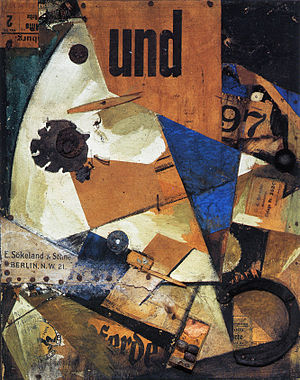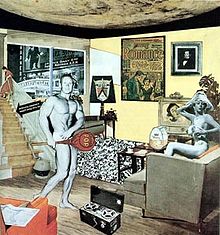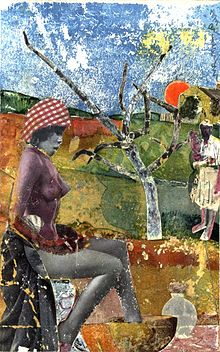collage/photomontage
From Wikipedia, the free encyclopedia
A collage (From the French: coller, to glue) is a work of formal art, primarily in the visual arts, made from an assemblage of different forms, thus creating a new whole.
A collage may include newspaper clippings, ribbons, bits of colored or hand-made papers, portions of other artwork, photographs and other found objects, glued to a piece of paper or canvas. The origins of collage can be traced back hundreds of years, but this technique made a dramatic reappearance in the early 20th century as an art form of novelty.
 Collage made from
photographs, or parts of photographs, is called photomontage.
Photomontage
is the process (and result) of making a composite photograph by
cutting and joining a number of other photographs. The composite picture was
sometimes photographed so that the final image is converted back into a seamless
photographic print. The same method is accomplished today using image-editing
software. The technique is referred to by professionals as compositing.
Collage made from
photographs, or parts of photographs, is called photomontage.
Photomontage
is the process (and result) of making a composite photograph by
cutting and joining a number of other photographs. The composite picture was
sometimes photographed so that the final image is converted back into a seamless
photographic print. The same method is accomplished today using image-editing
software. The technique is referred to by professionals as compositing.
 Creating a photomontage has, for the most part, become easier with the advent of
computer software such as
Adobe Photoshop. These programs make the changes digitally, allowing for
faster workflow and more precise results. They also mitigate mistakes by
allowing the artist to "undo" errors. Yet some artists are pushing the
boundaries of digital image editing to create extremely time-intensive
compositions that rival the demands of the traditional arts. The current trend
is to create pictures that combine painting, theatre, illustration and graphics
in a seamless photographic whole.
Creating a photomontage has, for the most part, become easier with the advent of
computer software such as
Adobe Photoshop. These programs make the changes digitally, allowing for
faster workflow and more precise results. They also mitigate mistakes by
allowing the artist to "undo" errors. Yet some artists are pushing the
boundaries of digital image editing to create extremely time-intensive
compositions that rival the demands of the traditional arts. The current trend
is to create pictures that combine painting, theatre, illustration and graphics
in a seamless photographic whole.
Digital collage is the technique of using computer tools in collage creation to encourage chance associations of disparate visual elements and the subsequent transformation of the visual results through the use of electronic media. It is commonly used in the creation of digital art.
Beyond piecing together smaller images to make a composite as illustrated in these examples, the projects for MCOM 315 Computer Production & Imaging should incorporate larger, overlapping images with varying degrees of opacity (transparency) as illustrated in these examples.
